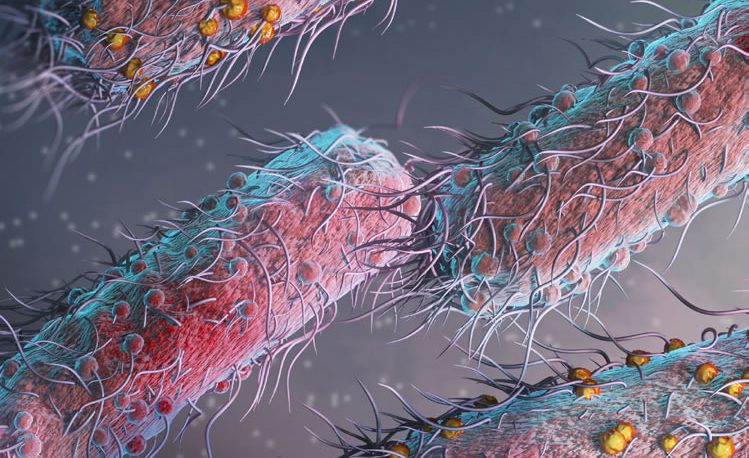Enterobacteriaceae producing carbapenemaseEnterobacteria are a large group of rod-shaped, facultative
rod-shaped, facultatively anaerobic bacteria, commensal
commensal bacteria found in the intestinal microbiota of humans
and various animal species (17). The pathogenic agent
can cause various types of infection, such as
urinary tract infections, pyelonephritis, septicemia
pneumonia and meningitis (18).
Carbapenemase-producing Enterobacteriaceae
(EPC) are Gram-negative bacteria with the ability to
hydrolyze carbapenems by producing carbapenemase enzymes
production of carbapenemase enzymes. Most carbapenemases
carbapenemases hydrolyze penicillins,
cephalosporins and carbapenems. What’s more, carbapenemases
carbapenemases are often associated with
resistance, as they are generally found on plasmids
plasmids containing multiple determinants of resistance
resistance determinants to other antimicrobial classes, thereby
treatment options (19). Well-described carbapenemases
such as Klebsiella pneumoniae
carbapenemase (KPC), New Delhi metallo-β-lactamase (NDM) and
metallo-β-lactamase (NDM) and oxacillinase 48 (OXA-48), are reported worldwide
worldwide, and increasingly so in Canada
(20) (21) (22).
EPC can spread to healthcare and community sectors.
and community sectors. On a global scale,
the incidence of EPC has been increasing for almost two
decades, prompting the World Health Organization
Organization (WHO) to designate EPC as an antimicrobial-resistant
antimicrobial-resistant (AMR) pathogen in 2017
(23). In Canada, the first cases of EPC were detected in
in 2008 (24); from 2010 to 2014, the five-year incidence
estimated at 0.09 per 10,000 patient days, and all-cause mortality
17.1 per 100 EPC cases for the same period.
the same period (20).
Treatment of infections caused by CPE
includes aminoglycosides, fluoroquinolones
and trimethoprim-sulfamethoxazole. Tigecycline-based
tigecycline and polymyxins (colistin) may be
can be considered, but only in cases of resistance to
resistance to all other antimicrobial classes.
However, the emergence of resistance to many of these
of these drugs has become a growing clinical challenge
challenge (25).

